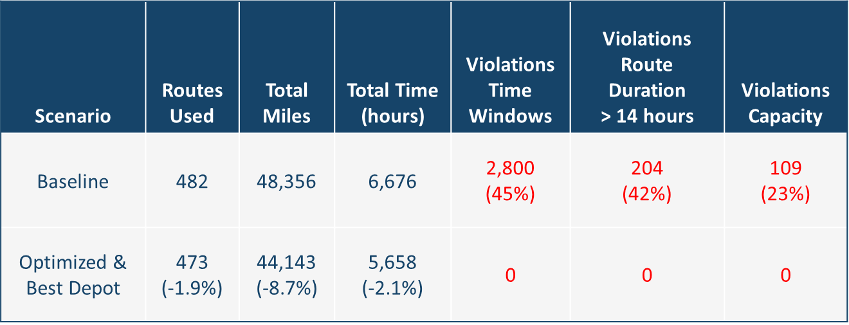
The turbulence of the past three years has shown senior management the importance of supply chains and logistics. While each company’s challenges and opportunities are unique, we wanted to find out if there were common technology innovation themes.
Conducted with SAPIO Research, Descartes studied 1,000 supply chain and logistics executives in North America and Europe, to determine where they’re placing their innovation emphasis and technology deployment focus. Some of the results will be surprising, while others show how market hype distorts innovation realities.
Digitization efforts are closely aligned with supply chain and logistics innovation because they’re about transforming company performance in ways that are visible to the customer. Because supply chain and logistics operations are very broad in scope, it’s highly unlikely that companies would have digitization programs that address the entirety of their operations.
The study identified the top digitization initiatives (Figure 1) that companies have focused on as order fulfilment (47%), customer experience (45%) and transportation processes (44%). Notice that these initiatives are largely customer-facing as opposed to back-office operations.
Figure 1: Digitization Initiatives

Source: Descartes
The answers to three questions paint a picture of where companies believe they’re most innovative in their supply chain and logistics operations, where they have the greatest need for innovation, and where they will focus innovation for the next two years.
In general, no one application area dominated the results for the current state of innovation and future focus. The degree of innovation in a given area is a function of its importance to the organization and historical focus. In some cases, supply chain and logistics applications, such as warehouse management systems (WMS), simultaneously topped the list of the most innovative part of the business, and that of applications having the greatest need for innovation (see Figure 2).
Following is a breakdown of the survey results.
Most innovative. Over a quarter of respondents feel their companies are most innovative with their WMS (28%) and transportation tracking (26%). Transportation management systems (TMS) were third (25%); however, this figure rose to 28% for those who said senior management believes supply chain and logistics innovation is very important, and declined to 18% for those who said senior management believe it less so.
Most in need of innovation. WMS (24%) was also cited as the top area with the greatest need for innovation, followed closely by inventory management (22%). The latter number is surprisingly low, given how many problems companies have experienced either with having excess inventory or not enough of the products that customers want.
Innovation focus over the next two years. The top focus areas here are customer experience (25%), TMS (24%) and WMS (23%). Customer experience was the highest priority for manufacturers, retailers and distributors, but the fourth-highest for carriers and logistics services providers. TMS was the highest priority for carriers and LSPs, but the fourth highest for manufacturers, retailers and distributors.
Figure 2: Application Innovation

Advanced computing technology has been touted as the next wave of supply chain and logistics innovation, but it’s still early stage for most companies (see Figure 3). When looking at full deployments, with the exception of data analytics (40%), most advanced computing technologies such as machine learning (20%), artificial intelligence minus machine learning (17%) and robotic process automation (16%) are still in the early stages of full production use. For pilots or partial deployments, however, there’s a lot of advanced computing technology activity in supply chain and logistics operations, in the form of robotic process automation (52%), machine learning (52%), data analytics (50%) and artificial intelligence –minus machine learning (47%).
Figure 3: Deployment Maturity of Advanced Computing Technology

The last several years have been an accelerator of supply chain and logistics innovation, with almost two-thirds (65%) of the study’s respondents indicating they’re increasing IT innovation funding. Given the scale and scope of supply chain and logistics, companies are focusing on transforming customer-facing processes and operations. No single supply chain or logistics application stands out as the dominant way to innovate, which speaks to the diversity of challenges and opportunities that companies face, and the need for a wide array of solutions. Many companies are early in their advanced computing technology journeys, but the next two years could prove interesting as pilots and partial deployments come to fruition. What technologies is your company using to innovate its supply chain and logistics operations?
Chris Jones is executive vice president of industry and services with Descartes.







